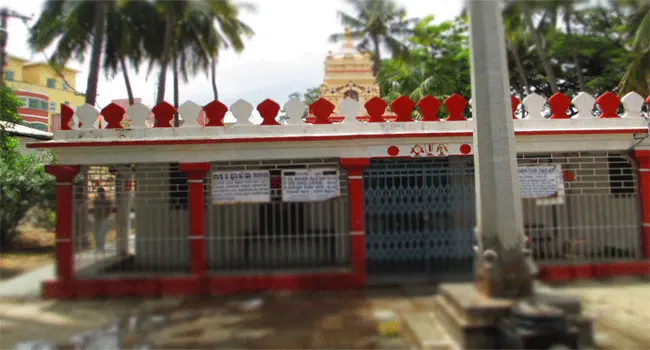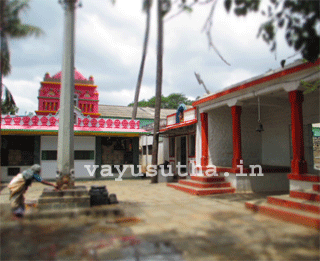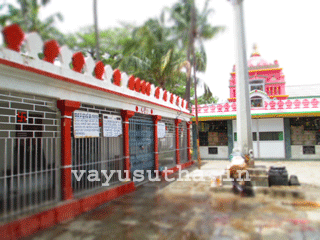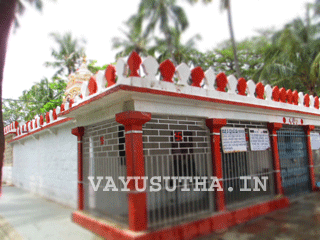
Lal Bagh Garden of Bangalore

Hyder Ali (1721 – 1782) wanted to build a grand garden in Bangalore during his time after a lot of deliberation based on the design of the Mughal Gardens that once stood at Sira, he commissioned the building of the garden in 1760. He named the garden “Lal Bagh”. It was his son Tipu Sultan (20 November 1750 – 4 May 1799), who further contributed to the development of this garden by importing trees and plants from several countries. And today it has the subcontinent's largest collection of rare plants. Lal Bagh is nearly 1 sq.km. in area and is located in South Bangalore.
After the death of Tipu Sultan the subsequent rulers also paid attention to the gardens as would be evident from the fact that regular additions were made. The extent of the gardens was around 45 acres in 1874. Thirty acres were added to the eastern side in 1889, followed by 13 acres in 1891 including the rock with Kempe Gowda tower, and 94 acres more in 1894 with subsequent additions thereto it is now nearly 240 acres in size.
Another attraction is Lal Bagh Rock, one of the oldest rock formations on earth, dating back 3,000 million years.
The well laid garden has four gates as entrances from all the directions.
The Western Gate of Lal Bagh
The western gate is situated near Siddapur Circle, where KH Road popularly known as the double road joins Hosur Main Road. One can enter this gate and enjoy the sylvan surrounding the garden.
Sri Anjaneya temple near Lal bagh western gate
There is a very old Hanuman temple near this gate. It is not easy to locate the temple. Even today the idol is hidden in the labyrinths of this area. If one takes the Hosur Main Road towards Siddhapura Road, on the right there is a Bata showroom adjacent to this there is a by-lane that can take one to this wonderful temple of Sri Hanuman. It will be interesting to know how this deity came to be located here.
Sri Ramadas and Sri Anjaneya
There was a person who was a devotee of Sri Anjaneya and called himself Ramadas. He used to visit the temples of Sri Anjaneya and lead a saintly life, by taking prasadams offered in these temples as food. When Sri Ramadas camping near Avenue Road Tuppada Anjaneya Swamy temple had a divine direction to proceed to a place near Lal Bagh and identify the Hanuman statue there. Sri Ramdas then went to the place indicated in his dream. After a long trail, he found a Hanuman statue carved out of a big rock on a hillock in one corner of the then Lal bagh. The exact year in which these happenings took place is not clear. It could be in the early part of the 20th century.
The Idol of Sri Hanuman on the rock
The statue was covered with bushes and shrubs. He put a lot of effort into getting the bushes and shrubs removed. Once the idol of Sri Hanuman was visible he started offering prayers to the deity. He then started asking for alms from nearby colonies and shops to offer prasadam to Sri Hanuman. In the meantime, people living around the area and the nearby shopkeepers started visiting the Sri Hanuman Rock. They volunteered in the preparation of prasadam and the conduct of regular poojas to the deity.
The name ‘Gutte Anjaneya’
The deity was considered very powerful. The miracle power of this Anjaneya started slowly spreading to the other parts of the City of Bangalore. Then Maharaja of Mysore, Sri Jaya Chamaraja Wadiyar, was on an official visit through this route. When nearing the hillock housing the temple of Hanuman, his car engine failed and could not be started. His Highness was then taken to this temple nearby. When he returned after offering his prayers, to everybody’s surprise the car started and the official work for which the Maharaja was going was also successful. This occurrence of a near miracle made the temple of Hanuman very popular.
Since the form of the deity was carved on a rock the deity came to be known as “Gutte Anjaneya” – gutte in Kannada language means rock, small hillock.
The devotees who had been beneficiaries of the grace of Gutte Sri Anjaneya Swamy decided to develop the temple out of their regard and love for the deity. As the number of devotees increased the temple also developed fast.
Gutte Sri Anjaneya Swamy Temple today
 As one comes from the road next to the Bata showroom, we see the big temple complex. As one enters the complex from the east side which is the rear entrance to the complex, on the left is the office of the temple. As one proceeds further, we can see the Bali peetam, Sri Rama patham, and Dwajastambam - all made of stone. As one stands looking northward from near the dwaja stambam, we will be looking straight into the sannidhi of Sri Rama Parivar. On the west side of the complex, there is a big entrance taking us towards the other side of the complex and on both sides of the pathway comfortable provision has been made for people to rest. There is a sannidhi for Lord Siva and Sri Ganapati on both ends of this structure.
As one comes from the road next to the Bata showroom, we see the big temple complex. As one enters the complex from the east side which is the rear entrance to the complex, on the left is the office of the temple. As one proceeds further, we can see the Bali peetam, Sri Rama patham, and Dwajastambam - all made of stone. As one stands looking northward from near the dwaja stambam, we will be looking straight into the sannidhi of Sri Rama Parivar. On the west side of the complex, there is a big entrance taking us towards the other side of the complex and on both sides of the pathway comfortable provision has been made for people to rest. There is a sannidhi for Lord Siva and Sri Ganapati on both ends of this structure.
After offering our pranam to Sri Rama patham, and to Sri Rama, Sri Siva and Sri Ganapati one enters the main hall of the temple.
Since the form of the deity was carved on a rock the deity came to be known as “Gutte Anjaneya” – gutte in Kannada language means rock, small hillock. The devotees who were beneficiaries of the grace of Gutte Sri Anjaneya Swamy decided to develop the temple out of their regard and love for the deity.
From the main mandapam, one can have the darshan of Sri Anjaneya Swamy the presiding deity in the garbhagraham. The mandapam is big enough to accommodate many devotees without any hindrance to the darshan of the deity. Many devotees are seen sitting in meditation and offering their prayers.
There is a two-foot-width pathway around the garbhagraham and a hall for the circumambulation of the deity. As one makes the pradhakshanam he/she can see part of the rock on which the main deity is carved.
Devotees can make pradhakshanam of the deity from outside. On this pathway in the southeast corner, the athistanam of Sri Ramadas who was responsible for identifying the idol now adorning the temple is situated. A plaque set therein mentions that he left his mortal coils on the 5th of December 1955.
Lord Gutte Sri Anjaneya Swamy

The deity Lord Gutte Sri Anjaneya Swamy of Lal Bagh is about seven feet tall made of hard granite stone in a walking posture and is of ‘ardha shila’ type facing west. Lord is seen walking southward with His left lotus foot in the front. His right lotus foot is seen slightly raised from the ground. Both His feet are adorned with nupur and thandai. The demon, wearing a crown is seen stamped and crushed by the Lord with his feet. The head of the demon can be seen below the Lord’s left foot and the legs of the demon can be seen below the right foot of the Lord. [This is the only temple of Sri Hanuman, in all probability, where the deity is seen stamping the demon with the face of the demon facing the ground.]
The Lord's left hand is adorned with a bracelet. He is seen with his left hand resting on his left hip and holding the stem of the sowgandika flower. The bottom portion of the stem with leaves is seen below his left palm. The flower still to blossom is seen above His left shoulder.
He is wearing ornaments which adorn His bosom. With His raised right hand He showers blessings on his devotees. The tail of the Lord is raised above his head with its curved end adorned with a small beautiful bell. The Lord is seen wearing ear studs and His kesam is neatly tied. A small crown adorns His head. His eyes are glowing and emit karunya for the benefit of the devotees. With such bright glowing eyes Lord of the Kshetra is a figure to be meditated upon.
The ‘Tiruvachi’ [artistic arch around the deity] is carved on the rock. On the top side of the Tiruvachi sun and moon are depicted. Sankh and Chakra are carved on the two sides of the Tiruvachi. This feature is also not seen normally in other Sri Hanuman temples, which makes this temple special.
Location of the temple: Gutte Sri Anjaneya Swamy Temple, near Lal Bagh Garden west gate of Bengaluru."
Experience
The darshan of Gutte Sri Anjaneya Swamy is bound to inspire you to overcome any difficulty and bounce back with confidence to face the same and achieve success.
SRI HANUMAN THINKS DIFFERENTLY, THINKS FAST
THINKS AHEAD AND ACTS FOR SURE
Ed [October 2014]
Updates: [Jan 2025]
